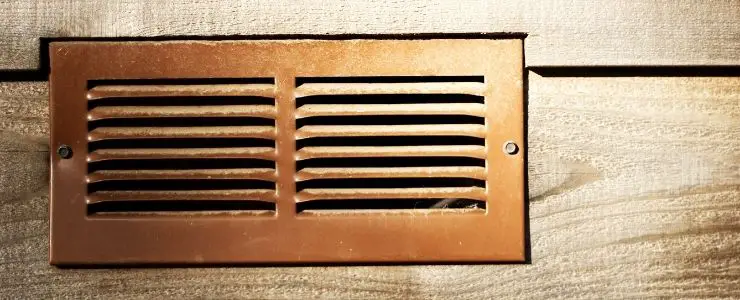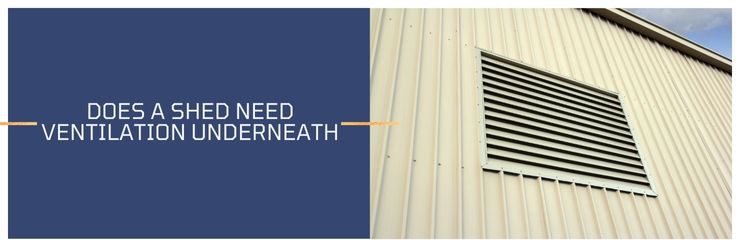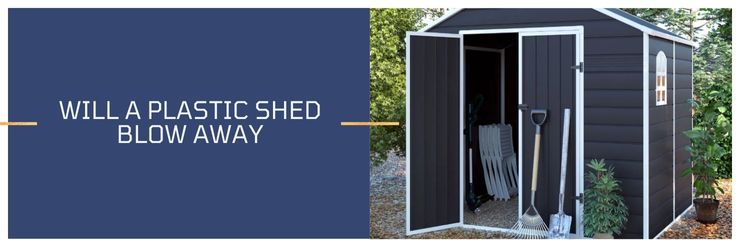If you’re a shed owner, then you may be wondering if your shed needs ventilation. After all, it’s not like your house where you have things like plumbing and electricity running through it. So does your shed really need to be ventilated?
Sheds need ventilation. Usually, the air inside a shed will be warmer and more humid than the air outside, which can cause problems like mold and mildew. Vents help by drawing fresh air into the shed and exhausting stale air out. Good ventilation also helps prevent fires.
If you are looking for a full guide on shed ventilation, including a guide on the different types of shed ventilation, how much ventilation is needed, and where to put it, then keep reading to learn all you need to know.
Do Sheds Need Ventilation
You may have heard that sheds need ventilation, but do they really? The answer is yes – sheds do need ventilation to keep the air circulating and to avoid moisture build-up. Without proper ventilation, your shed can become a breeding ground for mold and mildew, and it can also cause the wood to rot.
There are several ways to provide ventilation for your shed. One option is to install a window or door that can be opened to allow air to circulate.
You can also install a roof vent, an exhaust fan, or roof soffits and gables.
Whichever method you choose, make sure that the openings are large enough to allow adequate airflow.
Where should shed vents be placed
It’s important to place your shed vents in the right spot to ensure good air circulation.
You’ll want to place them high up or even on the roof or in a location where the air can flow through the shed easily.

One source of ventilation is ok and will work for smaller sheds. Two sources of ventilation, one placed at each end of the shed, will ensure cross ventilation and keep the air flowing.
Vents placed too close to the ground will not work as well, so be sure to place them high up on the shed.
How Much Ventilation Is Necessary
The National Building Code recommends 1 sq. ft. (144” sq.) of venting per 300 sq. ft. To find out how much ventilation you’ll need, multiply the length by the width of your shed and then divide it by 300. A shed that is 300sq ft or less, will require one sq ft vent.
Finding the right ventilation requires balancing your air intake and exhaustion. Too much intake and there will be a lot of moist air that lingers in your shed for long periods of time. Too much exhaust may cause hot air to be pulled back into your shed and may even bring moisture into your shed when there is a downpour.
Most sheds can be properly ventilated with simple gable louvered vents or turbines, so there are easy and inexpensive ways to ensure that your personal belongings are not at the risk of mold, dry rot, or exposure to harmful toxic chemicals over a long period of time.
- If your shed is less than 300 sq ft: Install one of these gable louvered vents
- If your shed is between 300 and 600 sq ft: Install two of these gable louvered vents
Do Sheds Need Different Types of Ventilation Systems
As you can tell, there are many reasons why you may need your shed ventilated, such as avoiding expensive damage such as dry rot or physical ailments because of improper ventilation. Finding the right ventilation process for you may be difficult, for there are many ways to ventilate a space properly.
Take a look at our gallery of options below:
| Type of Vent | Perfect For |
| Turbine & Base Unit (Amazon link) | Best for Heat Release, 12 Inch Diameter, Can Withstand Harsh Weather Conditions, Requires No Maintenance |
| Aluminum Alloy Outdoor Air Vent Cover Louver (Amazon link) | Inexpensive, Great for Small Sheds, Releases Hot Air, Promotes Proper Ventilation, Quiet Instrument |
| Handy Home Products Venting Skylight (Amazon link) | Provides Ventilation and Natural Light, Easy to Install, Great Inexpensive Option for Small Sheds, Prevents Fume Buildup |
| Solar Powered Attic Ventilator Gable Roof Vent Fan (Amazon link) | Most Environmentally Conscious Option, Powerful, Great for Big Storage Sheds, Renewable Energy |
| Powerful Industrial Exhaust and Ventilation Fan (Amazon link) | Most Powerful Option, Ensured Safety and Proper Ventilation, Heavy Duty Exhaust Fan, Industrial Quality Product |

As you can see, there are many ways in which you may be able to ensure the best ventilation system possible for your shed, and finding the right option for you will depend on your personal preference and maintenance goals. Keep reading to learn more about the best ways to ventilate your upcoming shed project.
- Turbine & Base Unit – This unit is probably most common on sheds found in residential neighborhoods and household sheds. This is a very inexpensive way to ensure that your material is protected from heat, and aluminum rust-free construction will last a long time. Use this turbine on any shed or attic that may be exposed to heat or high levels of humidity to ensure your materials and belongings do not deteriorate.
- Aluminum Alloy Outdoor Air Vent Cover Louver – This impressive and simple design is weather and pest-proof, and most commonly used on either end of a shed near the roof to ensure proper ventilation and heat distribution. The aluminum finish will never rust, and it will probably last as long as the shed will. This is a common inexpensive way to ensure proper ventilation in your shed.
- Handy Home Products Venting Skylight – We love this simple and effective skylight and ventilation system. This is an effective second choice option to the turbine that will allow for natural light to pour through the ventilation system that protects your shed from heat. While this is an inexpensive model, there are many stylish high-end skylight ventilation systems to choose from if you are looking for a more elaborate design.
- Solar Powered Attic Ventilator Gable Roof Vent Fan – If you are looking for something with a little more power, you may want to investigate this solar power vent fan. This fan will ensure optimal ventilation for a large, shed space. With this powerful design, you will cool your room while saving cooling costs that you would have to spend on an industrial model that has similar capabilities.
- Powerful Industrial Exhaust and Ventilation Fan – This heavy-duty fan is the most reliable ventilating system on the list, and the price reflects that. If you have expensive personal belonging that need to remain at a certain temperature, or if you have a large industrial size shed, you may want to invest in this high-end ventilation model.
It is important to be honest with yourself about what you want and what you can afford. If you are buying a small shed for the first time, there is no shame in investing in a low-price ventilation system such as the turbine or aluminum vent covers. These models will last a long time and provide the sufficient airflow you need. If you are storing a large number of chemicals, or have an industrial-sized shed, you may want to consider the industrial-sized industrial fan at the bottom of our list.
What Are Common Issues Caused by Sheds with Poor Ventilation
Many people do not spend a lot of time in their shed because most sheds are made specifically for storage purposes, so we often do not consider the dangers of toxic air quality. While a certain familiar smell can be friendly, toxic gasses from paints, oils, and other materials in a shed may cause health problems if you are exposed to deadly gasses for too long.
Take a look at some of the common issues that you may run into if you do not properly ventilate your shed:
- Stale Air – This may be the most obvious telling sign that something is wrong because when your shed is suffering from stale air, there will be a discernable unpleasant smell that starts to invade all items and make them smell unpleasant. This may cause short-term respiratory pain and eye irritation.
- Harmful Chemicals – If you are storing items such as gasoline, pool chemicals, fertilizers, and other items that may cause noxious gasses, you may want to consider checking your ventilation system. Poor ventilation systems with these chemicals can result in respiratory issues, eye irritation, skin irritation, and you run a higher risk of flammable gas being extremely explosive in tight spaces.
- Excessive moisture and Condensation – Moisture may cause mold and mildew to grow, causing long-term respiratory problems, headaches, and damaged personal belongings. Condensation may cause wood to rot, metals to rust, and mold to grow with excessive moisture build-up.
- Heat – Working in your shed can be extremely uncomfortable in the heat and may eventually cause respiratory issues. Some personal items may not be able to withstand the heat within the shed.
- Cold – It may be very uncomfortable to work in your shed in the winter months, and without a vapor barrier, you may be exposing yourself and your personal belongings to harsh conditions that may cause harm.
Related article:
Final Thoughts
We looked at, do sheds need ventilation? We learned that keeping your shed properly ventilated is essential in maintaining not only your shed’s health but your health and the health of all of the personal items you are intending to store.
Do not risk succumbing to your personal items to rot and taking in noxious chemical fumes. Instead, invest in a proper ventilation system that will ensure the longevity of you and your shed’s health.
Do some research and find the ventilation system that best suits your needs and install your ventilation system to improve your working conditions while in your shed. Give yourself the treatment you deserve and take care of your personal belongings like never before in your newly ventilated shed.







